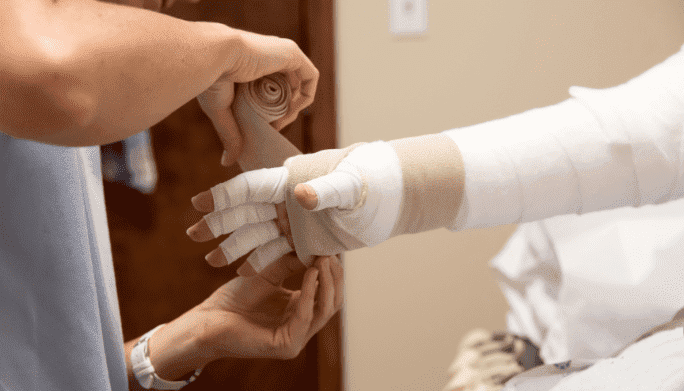Lymphedema In Saint Cloud

How Can Occupational Therapy in Saint Cloud Help Lymphedema?
Occupational therapy plays a pivotal role in managing and mitigating the effects of lymphedema. This chronic condition, characterized by an accumulation of lymphatic fluid, can lead to painful swelling primarily in the arms, legs, and head/neck. The occupational therapy intervention for lymphedema seeks to restore function, reduce physical and psychological discomfort, and prevent the progression of the condition.
The primary strategy in occupational therapy for lymphedema is a process known as Complete Decongestive Therapy (CDT). This comprehensive approach combines several methods to effectively manage the symptoms and complications of lymphedema. CDT comprises four essential elements: manual lymphatic drainage (MLD), compression therapy, decongestive exercises, and meticulous skin and nail care.
Manual lymphatic drainage is a specialized massage technique designed to stimulate the flow of lymph fluid and redirect it from swollen areas to regions where the lymphatic system is functioning normally. This gentle, rhythmic procedure is performed by trained certified lymphedema therapists who understand the complex anatomy and physiology of the lymphatic system.
Compression therapy involves the use of specialized garments or bandages to apply consistent pressure to the affected area. This constant pressure aids in preventing the re-accumulation of lymphatic fluid following manual lymphatic drainage. Compression garments should be worn during physical activities to ensure the most effective drainage.
Decongestive exercises are another cornerstone of the occupational therapy regimen for patients with lymphedema. These exercises, performed under compression bandages or garments, assist in the mobilization of lymph fluid by stimulating muscle pump activity. Furthermore, these exercises can enhance overall physical fitness, strength, and flexibility, improving the quality of life for individuals living with lymphedema.
Meticulous skin and nail care is crucial in managing lymphedema. The compromised lymphatic system may lead to an increased risk of infections. Therefore, regular hygiene practices, including daily cleansing and moisturizing of the skin and careful attention to nail care, are vital components of the lymphedema management plan.
Where can Lymphedema appear?
Lymphedema can manifest in various parts of the body, depending on the area affected by the compromise or damage to the lymphatic system. The most common sites are the arms and legs, especially in cases of secondary lymphedema, which often occurs after cancer treatments involving the removal or radiation of lymph nodes in these areas. However, lymphedema is not limited to the limbs. It can also occur in other parts of the body, such as the chest, back, abdomen, or even the head and neck in certain circumstances. For instance, surgical procedures or radiation therapy for head and neck cancers can result in lymphedema in these regions. Truncal lymphedema, affecting the chest, breast, and back, is another commonly observed manifestation in women who have undergone breast cancer treatment. Genital lymphedema is a rare form, and it often results from gynecological cancers, prostate cancer, or lymphatic filariasis. It’s important to note that the manifestation of lymphedema can vary greatly from person to person, even when the underlying cause is similar. Therefore, the individualized evaluation and treatment plan is a crucial elements in managing this complex condition.
Benefits of Occupational Therapy in Saint Cloud for Lymphedema
Occupational therapy for lymphedema is a lifelong commitment that requires active patient participation and adherence to the prescribed treatment plan. While lymphedema remains a chronic condition, with the aid of skilled occupational therapists and comprehensive treatment strategies, patients can effectively manage their symptoms, improve their functional abilities, and enhance their overall quality of life.


